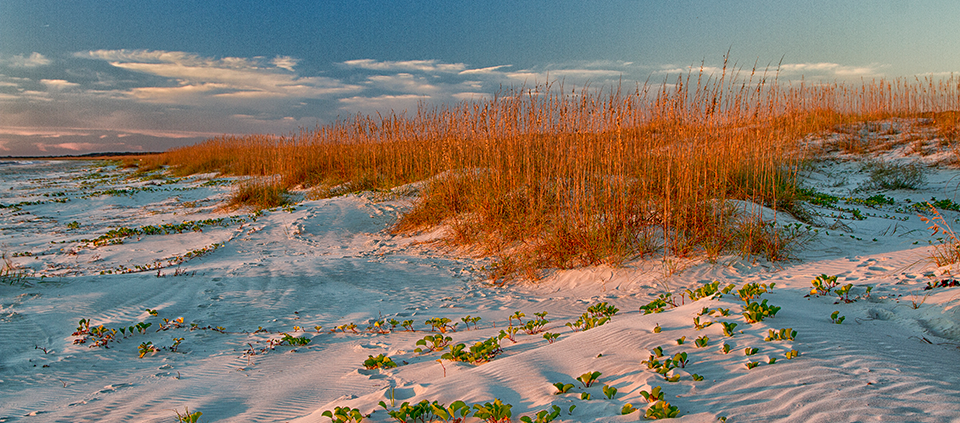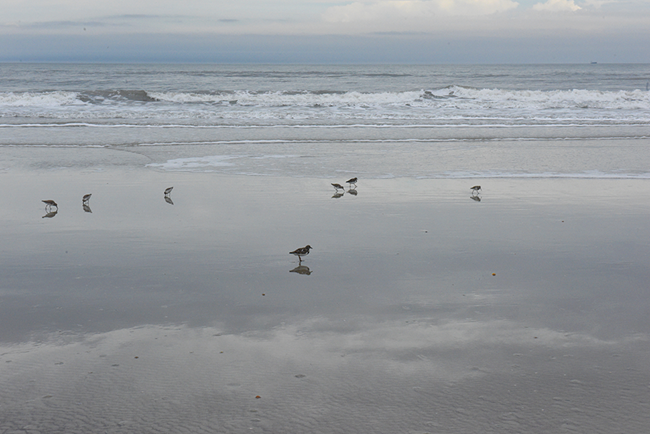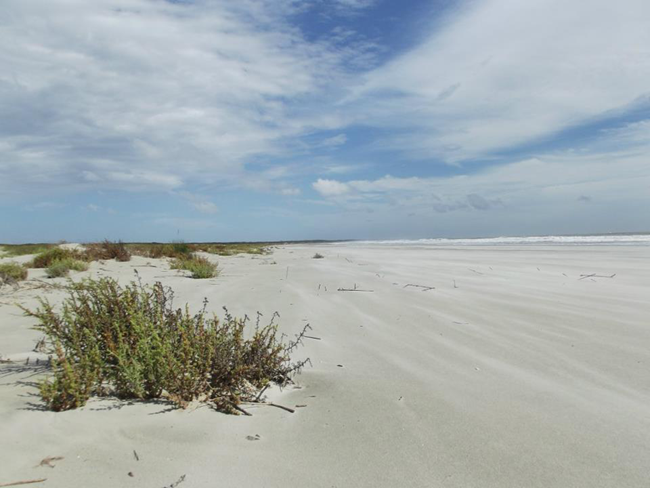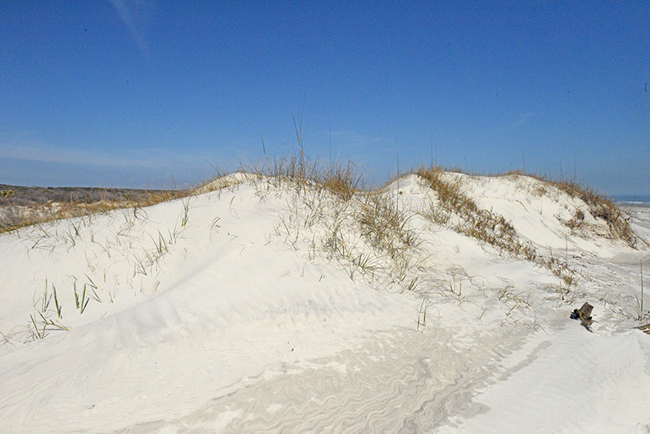
NPS Photo 
NPS Photo/Stella Carroll Beach ZonesThe beach and dune environment can be divided into several zones. Each zone can support different animals and some plants. The portion of the beach that is covered and uncovered twice daily by the tide is called the intertidal zone. The animals that live in this zone have to contend with being out of the water for extended periods of time when the tide goes out. Animals like ghost shrimp dig deep burrows to keep them hydrated during low tide. Clams and other shellfish close up their shells and burrow under the sand to conserve water and stay out of the sun. 
NPS Photo/Stella Carroll HabitatThe beach is a harsh environment in which to make a living. Temperature fluctuations, wave action, tides, and weather create ever-changing conditions. Few animals call the beach their home, while many visit as they forage for food or search for suitable nesting locations. Marine animals come and go with the tide. Algae colors the sand a golden hue as it surfaces to catch the sun’s rays at low tide, before retreating as the tide returns. At night, bioluminescent plankton called dinoflagellates glow in the dark in the crashing waves.Many visitors find the remains of animals like whelks, clams, and horseshoe crabs, but the microscopic organisms living between the sand grains go unnoticed. Birds, crabs, sea stars, and turtles attract attention on the beaches, while offshore; dolphins, manatee, alligators and the North Atlantic right whale may be seen. As you travel away from the beach into the sand dunes, life becomes a bit easier and biodiversity increases. The large dunes of Cumberland island block wind and waves, providing a shelter slightly removed from the salty beach. Freshwater wetlands found during the wet season provide important resources for animals and plants. Berry producing plants such as wax myrtle and beauty berry abound in the interdune meadows, providing food to many birds as they migrate. 
NPS Photo/Stella Carroll Sand Dune FormationSand dunes are an important part of a barrier island. On Cumberland, the undisturbed beach allows visitors to experience what a mature sand dune system looks like. The stages of sand dune formation can be observed while on the island.Over time, the mountains of North Georgia have weathered away and been transported to the ocean by river systems. Ocean waves deliver this sand to the beach. Many years of wave action pushes sandbars onto the beach where the wind and sun dry it out. Some of this dry sand on the surface of the beach is transported by wind. When the wind blown sand hits some kind of barrier, such as marsh wrack, sea shells, dune vegetation or debris, the wind energy lessens, and sand being carried by the wind is dropped. This is the formation of an embryo, or incipient, dune. If there are no storms to wash out these small piles of sand, they continue to build up. Seeds from dune vegetation are deposited by wind, water or animals. Since sand has no nutrients, marsh wrack decomposing under the sand pile is very important for the seedlings' growth. Once these plants are established, sand dunes become stabilized. The first plants found on the dunes are railroad vine and beach croton. They are low growing plants, spreading laterally rather than vertically. Sea oats come in next. Unlike railroad vine and beach croton, sea oats grow vertically as well as laterally. The flattened seeds (which give sea oats its name) and leaves help block the wind and build up the sand. Because the sand is deposited around the base of the sea oat, parts of the plant get covered and die. As they decompose, sea oats constantly supply more nutrients for the growth of new sea oats. Sea oats also create new roots as they become buried, increasing the stability of the dune. By providing a barrier to the wind, sea oats build up the dunes and provide their own nutrients. Sea oats are protected by federal law because of their importance in stabilizing the dune ecosystem. Each layer of dunes provides a line of defense against wind and water, protecting the areas behind them. The dunes are home to a variety of animals. Because sand heats and cools quickly, animals have to adapt either behaviorally or physically. Many are light colored to prevent absorbing the heat. Ghost crabs are good examples. Others stay hidden in the heat of the day. These animals are identified mainly by their tracks. |
Last updated: December 11, 2018
